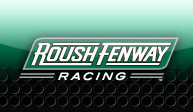Roush-Fenway - Pre-race Comments - Fontana
 |
Fontana, February 16, 2009: In Their Words...
Roush Fenway crew chiefs Jimmy Fennig, Bob Osborne, Eddie Pardue and Mike Beam along with Carl Edwards, talk about the challenges the Auto Club Speedway presents, differences between day and night racing and what it takes to win in California.
No. 99 Aflac driver CARL EDWARDS on California: “Auto Club Speedway challenges every part of your crew and every part of your team. You have to have a great aerodynamic package. You have to have a great engine. Your pit crew has to be on it. And for the driver it’s a pretty big finesse racetrack, so you get to see how strong the team is by how they run there.
“To me there’s not much difference between the first race and the second race at Auto Club Speedway except that you kind of know where you stand at the second race. The first race is really a litmus test for the whole season. You kind of see where everybody stacks up, how their teams worked in the off-season.”
No. 6 UPS crew chief JIMMY FENNIG on California: “The biggest challenge at California Speedway is fighting the air balance of the cars in traffic.
“There really isn't much of a difference between the spring and fall races in California. The only one I can really think of is temperature since one is a day race and the other is a night race. We just need to make our adjustments accordingly.
“Track position is very important when it comes to winning at California. You need your car to be handling well, but a great car lacking track position won't get it done in the end.”
No. 99 Aflac crew chief BOB OSBORNE on California: “Well, the biggest issue to be addressed at Fontana is how tight the car gets during a run. The car always tends to handle a little on the tight side at Fontana, so we need to stay ahead of the track conditions and have our setup just right for the final run of the race.
“The major factor that is different from the first race to the second race is the effects of the sun on the driver’s ability to see going into turn three. For a good portion of the race drivers are unable to see for about a second as they enter turn three. We'll tape the windshield and do what we can to give Carl the best visibility, but really we'll depend a lot on our spotter and hope things go well.
“Winning the first Fontana race was great. It seemed like everyone was having handling issues, but us. We just benefitted from their bad luck. To win at Fontana it just takes a darn fast race car that handles well the entire race. You need the best track position when the checkered flag drops.”
In Their Words continued…
No. 16 CitiFinancial crew chief EDDIE PARDUE on California: “One of the big challenges for California Speedway is that we race in the evening but half of allotted practice time is during the day. That makes it a bit more challenging to dial the car in but previous knowledge, engineering and a championship driver should help us come up with the right set up.
“The big difference from the first and second race is that it is very slick at the second because of the high temperatures. The track becomes slick and very hard to dial in the set up at the second race.
“It takes a whole team effort from driver and crew with no mistakes to win. A good handling fast car will not hurt either. We have Greg (Biffle) behind the wheel this weekend and he’s won three Nationwide races and a Cup race there so he knows how to get it done. I think we have the talent and experience on our team to pull off a win next weekend.”
No. 6 Con-way Freight crew chief MIKE BEAM on California: “The surface at California is pretty rough and worn out, the trucks really slide around a lot. You need to have a good pit strategy to keep fresh tires on the truck at the end if possible. The long straights make drafting important, and you need good horsepower to be able to pull out and make a pass.
“To win, you need good horsepower to get down the straights and lots of downforce to make the truck stick in the corners. The pit crew has to be on their game to help you gain spots on pit road, particularly with the new pit road procedures.”


